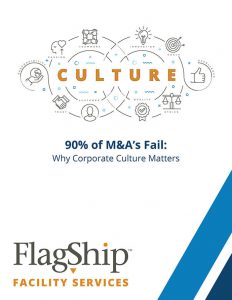2018 significantly out-paced 2017 and more deals are on the horizon.2 Not even the global financial tensions we’re seeing have been able to stop the rush to merge or acquire. This past year, deals involving companies based in different countries nearly doubled compared to the previous year.3 So, what’s the driving force? There can be several reasons including:
- Diversification: When a company merges it may be looking to diversify its services by merging with another company in an unrelated industry but considered a threat to their business. By merging, it eliminates a threat and reduces the impact an industry can have on their profitability. For example, a dermatologist builds their practice by treating sensitive skin. They learn about a technology that will render their services obsolete. So instead of waiting until that day comes – they purchase that company, add that technology to their services and increase their own value.
- Growth and Expansion: Through a merger, the acquiring company can increase their market share in a short period of time. When the deal is consummated, they’ve essentially acquired another company along with their share of the market.
- Increase Supply Chain Pricing Power: When a company buys out one of its suppliers, their costs for that supply typically go down considerably. The company no longer incurs the markups associated with the supply purchase so their margins increase.
- Competition Elimination: In many cases, a company acquires another because it eliminates future competition and increases their value.
- Survival: Survival, especially in a tight economy, can cause companies to merge or seek to be acquired.
- Talent: Talent is a competitive advantage, and, in some cases, it can drive a company to acquire another. If the acquiring company has resources and the company to be acquired has top-tier talents, when these two combine, the possibilities are limitless.
Mergers, Acquisitions, and the World of IFM

The recent flurry of M&A’s has touched every economic sector. That includes Integrated Facilities Maintenance (IFM) where the frequency of activity is moving at a more rapid pace than in years past. This trend is set to continue as operators become more strategic in how they offer their services.4 M&As will accelerate as the industry continues to move toward service integration and other services that focus on helping businesses become more profitable and productive – not just maintaining their facilities. Intellectual property is another key driver in the increase in M&A activity in the Facilities Management (FM) sector.
The organizations that truly understand Facilities Management (FM) as opposed to Facilities Services (FS) are in the minority. Facilities Services consist of requests made outside of routine maintenance. Things like installs, noncommon area painting and carpeting beyond the planned maintenance cycle all fall under this heading. On the other hand, Facilities Management encompasses multiple disciplines used to ensure functionality, comfort, safety and efficiency of the environment by integrating people, place, process and technology.
Those specializing in Facilities Management have begun acquiring the smaller Facilities Services organizations and integrating them into their models where applicable. Another reason for the increase in M&As in Facilities Management is the professionalization of the industry. Facilities Management is no longer just a broom, a mop and a set of keys. Nowadays, most executives have a greater appreciation for the value that Facilities Management offers in terms of operational efficiencies and effectiveness – two areas that directly impact their bottom lines. More than at any time in the past, organizations are depending on Facilities Management to deliver the optimal level of facility performance in key areas.
The perception of Facilities Management has changed but the understanding of how it can impact a facility has also evolved.5 Executives are always looking for ways to cut costs and build a strong bottom line. But through Facilities Management, they’ve learned that building an environment that attracts and retains talents, increases productivity and drives profits in ways traditional cost-cutting simply can’t match. Facility Managers are an integral part of this process that helps these executives achieve these goals and others.
Download Now!
Take the 90% of Mergers & Acquisitions Fail white paper with you! Download a PDF version now.
Download PDFNumbers are Important, but what About Organizational Culture?
On the surface, a deal can have all the makings of a success, especially when the financials are considered. Increased valuations, stock prices, resources, and business from new accounts are all drivers that have a financial impact.
“Over 30% of all mergers fail due to failed culture integrations”
– The Society of Human Resource Management
But once the details have been ironed out, some leaders are faced with the truth that their priorities were wrong. Finances matter, but the most important part of this complicated mix is building the right culture. The difficulty of merging two cultures is typically underestimated. Most leaders feel that since the businesses are in the same industry, when it comes to building a culture, no true effort must be given. Nothing could be further from the truth. The skills and talents of the merged workforce may be similar but the processes by which they’re applied and the KPIs upon which success is measured can be totally different.
When scenarios like this occur, employees become frustrated and their confidence suffers – as a result, the workplace suffers and the merger and acquisition milestones are negatively impacted.

If only executive leadership placed a premium on creating one culture.
“73% of leaders involved in mergers and acquisitions do not prioritize cultural compatibility during due diligence”
– Deloitte
Why Culture Makes all the Difference
Building and nurturing a culture is important to the employees and their customers. It gives a company an identity, shaped brand perceptions and helps those outside the company identify with them.
“Without a positive corporate culture, many employees will struggle to find the real value in their work”
– Forbes6
- Having a defined culture sets the stage for success: Employees will understand the expectations of their environment and their ability to deliver to those expectations is enhanced. They take ownership of the environment and their roles. When this happens the prospects for success increase. In those instances where culture is ignored with the hopes that other factors will override it, chaos will at some point ensue.
- Culture can galvanize: Culture galvanizes while factions destroy. A faction is best defined as a subgroup that opposes the ideas of the larger group and promotes their own. They’re corporate killers and arise in places that lack cultural definition. Conversely, when individuals know they’re valued, understand the culture that is being created and see themselves in it, higher rates of engagement, retention and success can be expected.
- Culture attracts and retains the right people: If an organization has taken the time to build and nurture their culture, it can be a gold mine for HR and Recruiting. They won’t have to go out looking for talent – talent will come looking for them. The opposite is also true. In those organizations where no culture exists, there are always challenges in the areas of hiring and retention. When there is a culture, HR and Recruiting have the freedom to build a staff that aligns with their core values. When there isn’t a culture, the environment is always in a state of flux and efficiency suffers.
- A pathway to success: When there is a culture, employees become empowered. When employees become empowered, communication, productivity, creativity are all impacted in a positive way.
- Workplace Order: A workplace that lacks order is usually one that lacks success. With culture comes order as everyone understands what’s expected and the methods by which goals are to be achieved.
- Having a culture can differentiate your company: Some business leaders have often referred to a company’s culture as their secret sauce. It’s what makes a company different and sets it apart. By the same token, where there is no culture, it can become a detriment as the company moves without a compass of any type to guide it.
- Strategy Enhancer: Most companies have a business strategy in place. Unfortunately, most are not aware of the impact their culture has on their strategy. With a culture in place, the strategy typically takes off and incremental growth comes with it. When there is no culture, no matter what strategy is in place, the company will stall, stagnate and in some cases, fail.
Download Now!
Take the 90% of Mergers & Acquisitions Fail white paper with you! Download a PDF version now.
Download PDFConclusions
“95% of employees say that culture is more important than compensation”
– Forbes
As mergers and acquisitions increase in the Facility Management industry, a vendor’s customers may become painfully aware of how those M&A’s impact them. Aligning with a vendor who has yet to define their culture or are incapable of redefining it post M&A, can only serve to damage yours – and the business you’ve built.
When you partner with a vendor that engages in frequent M&As, time and valuable resources are lost as their executives and managers are working through the challenges of combining personnel, operations and, yes, culture.
“58% of companies that have been involved in M&A’s reported that they didn’t have a specific approach to assessing and integrating culture into their new environment”
– Alan Hewitt
The functionality of your facility may also be impacted and the confidence of your staff could potentially suffer as well. Your employees are organized around a carefully cultivated culture (your culture) only to have that orderly esprit de corps threatened by a vendor who isn’t aware of or attuned to that culture. Rather than improve the operations and efficiency of your facility, a culture clash can lead to a variety of unanticipated issues.
Culture Building is Hard Work
Building a strong culture takes effort and let’s face it, not all companies are willing to make the investment. It’s more than short-term programs or catchy taglines. It’s a concerted effort to maintain the ideals, values and principles that shape behaviors in the long term. A culture is an integral part of your success – and it takes a lot of hard work to build one.
“88% of employees believe culture impacts their career success”.
– Deloitte
When Flagship began, we embraced the hard work that comes with building a culture and over the last 30 years, we’ve held steadfast to that culture. There’s power in this approach and we’ve seen firsthand how it drives success. Before crunching numbers, discussing methods, manpower or solutions, we first examine the culture of a potential partnership.
The alignment of our two cultures is a critical factor as we determine if a particular facilities management partnership is a fit for our business and culture.
Growing Organically
Acquiring and merging may work for some, but at Flagship, we’re focused on organic growth. We’re committed to remaining attuned to the marketplace and our customers. We’re also committed to building through talent and our culture plays a part in that.
“94% of executives believe a distinct corporate culture is important to a business’s success”.
– Deloitte
Our belief is that a strong workplace culture is one of the best ways to attract and retain top-tier talents. To this point, we’ve strategically built one that employees are proud to call their own and allows them to excel.
Our reputation for building a culture powered by organic growth is a valuable recruiting tool. The positive culture we’ve created through this approach helps drives high retention rates. These retention rates have translated into high levels of service and a roster filled with satisfied customers.
Corporations that have strong cultures are staffed with loyal employees. When employees are loyal they begin to “own” the brand and champion the ideals that the culture has come to represent. This is how some of the greatest companies in the world became great – by building a culture that employees see themselves in and engaging them through it.
Engaged employees are loyal and a product of a positive workplace culture. They’ve been empowered during every step of their career journey. When this dynamic is present, everyone wins – from the company to the employee and their peers.
Endnotes
- Kaplan, Steve (2016 May 2) Retrieved from
http://review.chicagobooth.edu/finance/2016/article/forget-what-youve-read-most-mergers-create-value - Grocer, Stephen (2018 July 3) Retrieved from
https://www.nytimes.com/2018/07/03/business/dealbook/mergers-record-levels.html - Grocer, Stephen (2018 July 3) Retrieved from
https://www.nytimes.com/2018/07/03/business/dealbook/mergers-record-levels.html - Eltringham, Mark (2015 October 29) Retrieved from
https://workplaceinsight.net/facilities-management-must-become-more-strategic-or-risk-becoming-irrelevant/ - Sullivan, Ed (2005 April 1) Retrieved from
https://www.facilitiesnet.com/facilitiesmanagement/article/Adding-Value-Facilities-Management-Facilities-Management-Feature–2738 - Kohl, Alan (2018 August 14) Retrieved from
https://www.forbes.com/sites/alankohll/2018/08/14/how-to-build-a-positive-company-culture/#3758a7fd49b5
Download Now!
Take the 90% of Mergers & Acquisitions Fail white paper with you! Download a PDF version now.
Download PDFSubscribe Now!
Stay up to date with the latest facility management tips and news.





